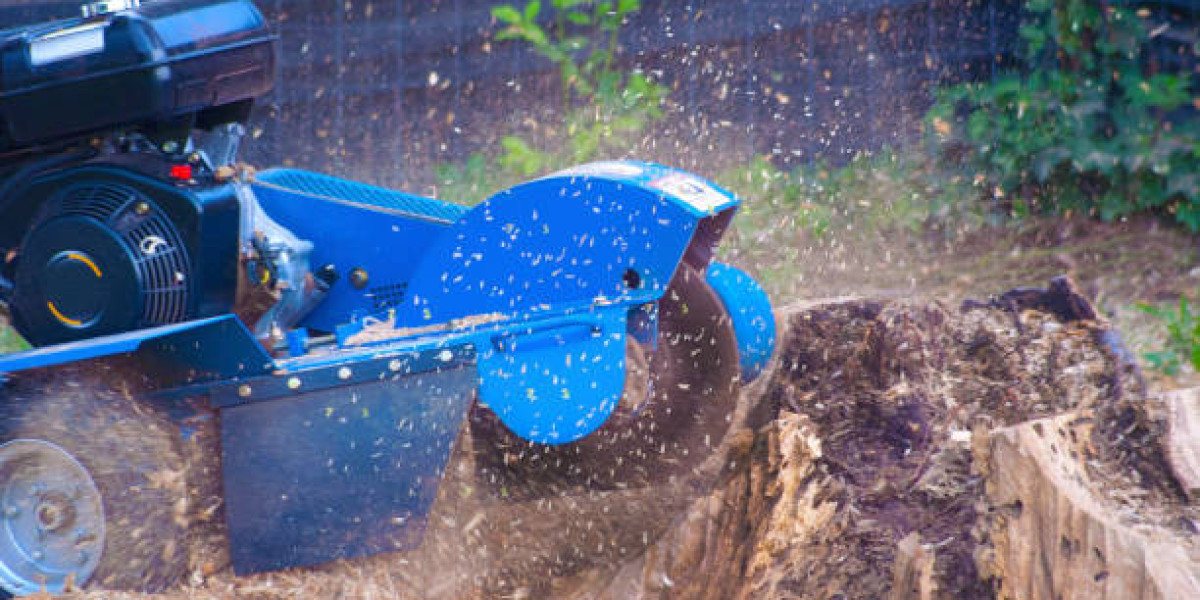When a tree is cut down, the stump left behind can become more than just an eyesore—it can create hazards, attract pests, and interfere with future landscaping plans. Property owners often face an important decision: should they go for tree stump grinding or complete stump removal? Both methods have their advantages and drawbacks, and choosing the right one depends on your specific needs, goals, and the condition of your property.
Understanding the difference between these two processes can help you make an informed choice that enhances your landscape’s health, beauty, and safety. Professional companies like HillTop Tree Service bring the expertise and equipment needed to perform either procedure correctly, ensuring long-term satisfaction and value.
Understanding Tree Stump Grinding
Tree stump grinding involves using a specialized machine called a stump grinder to shred the stump into small wood chips. The grinder typically cuts down several inches below ground level, effectively eliminating the visible portion of the stump. What remains underground eventually decomposes naturally over time.
This process is fast, efficient, and leaves the ground relatively level, allowing you to cover the area with soil or grass afterward. Many homeowners prefer stump grinding because it is less invasive, cost-effective, and doesn’t require extensive digging. It also minimizes damage to the surrounding landscape, making it an ideal choice for yards or gardens with established vegetation.
What Is Stump Removal?
Stump removal, on the other hand, is a more aggressive method that involves extracting the entire stump along with its root system. This process often requires heavy machinery or manual labor to dig out the roots completely. While stump removal ensures that nothing remains underground, it also leaves behind a large hole that must be filled and leveled before replanting or construction can occur.
The main benefit of full removal is that it prevents any chance of regrowth. However, it’s more labor-intensive and can be significantly more expensive than tree stump grinding. It’s generally recommended for properties where replanting another tree or construction work is planned in the same area.
Comparing the Two Methods
Both tree stump grinding and stump removal achieve the goal of eliminating a tree stump, but they differ in approach, cost, and environmental impact.
1. Cost and Efficiency
Stump grinding is typically more affordable since it requires less time and labor. A professional arborist can usually complete the job within a few hours, depending on the size of the stump. Stump removal, however, is more time-consuming and can cost more due to the extensive digging and cleanup required.
2. Environmental Considerations
Grinding leaves the roots in place, allowing them to decompose naturally and return nutrients to the soil. Stump removal, while more thorough, disturbs a larger area and can lead to soil erosion or landscape damage.
3. Impact on Future Landscaping
If you plan to replant a tree in the same spot, full stump removal may be necessary to make room for new roots. However, if the goal is to level the ground for grass or decorative plants, tree stump grinding is usually sufficient.
4. Risk of Regrowth
In some tree species, roots may continue to sprout after grinding. Removal eliminates this possibility completely, but it comes at the expense of more disruption. Proper grinding depth and post-treatment can reduce the risk of regrowth significantly.
Benefits of Tree Stump Grinding
One of the greatest advantages of tree stump grinding is its ability to restore your yard’s visual appeal quickly. By turning the stump into mulch, it helps create a smooth surface that blends naturally with the surrounding landscape. The resulting wood chips can even be used as mulch for other plants, providing added environmental benefits.
Grinding also reduces the risk of pest infestations. Old stumps can attract termites, beetles, and ants that may eventually spread to nearby trees or structures. By removing the exposed portion of the stump, you cut off a potential breeding ground for these unwanted pests.
Additionally, tree stump grinding promotes safety. Exposed stumps can be tripping hazards, especially in high-traffic areas or around children and pets. Grinding eliminates this danger while preserving the integrity of the soil beneath.
When Stump Removal Is the Better Option
Although stump grinding is often preferred for residential landscapes, there are situations where full stump removal makes more sense. If you’re planning to install a patio, driveway, or foundation in the same area, it’s crucial to remove the entire root system to prevent future issues.
Likewise, if the stump is from an invasive tree species with an aggressive root network, removal may be necessary to prevent regrowth. Large commercial or agricultural properties may also benefit from complete removal to prepare the land for new use or development.
However, because of the extensive digging involved, stump removal should always be handled by professionals to ensure safety and minimize property damage.
Environmental Impact and Soil Health
From an environmental perspective, tree stump grinding tends to be the more sustainable option. It allows for natural decomposition, which enriches the soil with organic matter over time. The mulch produced during the process can also be repurposed in garden beds, improving moisture retention and reducing weed growth.
Conversely, stump removal disrupts the soil ecosystem more heavily. It can lead to compacted earth, which makes replanting or landscaping more difficult. If environmental preservation and soil stability are priorities, grinding offers a more eco-friendly solution.
Why Professional Expertise Matters
Both tree stump grinding and stump removal require specialized tools and safety precautions. Attempting either process without the right equipment or knowledge can be dangerous and result in property damage. Professional arborists and tree care specialists have the training to evaluate your stump’s condition, recommend the right method, and execute the job efficiently.
A reputable company will also ensure that the surrounding trees, plants, and soil remain unharmed. This level of precision reflects the core principles of E-E-A-T: experience, expertise, authoritativeness, and trustworthiness. Experts bring real-world knowledge gained from years of handling various tree species and site conditions, ensuring that every job is performed with care and professionalism.
Conclusion
Deciding between tree stump grinding and stump removal ultimately depends on your property’s specific needs, goals, and future plans. For most homeowners, grinding provides an efficient, affordable, and environmentally friendly way to eliminate unwanted stumps without major disruption. However, for those planning construction or replanting, full removal might be worth the investment.
Whichever method you choose, the key is professional execution. With expert help from HillTop Tree Service, you can ensure that the process is done safely, efficiently, and with lasting results. Investing in professional stump care today not only improves your property’s appearance but also protects its health and value for years to come.
FAQs About Tree Stump Grinding and Removal
Is stump grinding faster than removal?
Yes, stump grinding is usually faster and less disruptive, making it the preferred choice for residential properties.
Will the tree grow back after stump grinding?
In most cases, no. However, some species may sprout if not ground deeply enough. A professional can ensure complete grinding to prevent regrowth.
Can I plant a new tree in the same spot after grinding?
It’s possible, but experts recommend waiting until the remaining roots decompose or adding fresh soil to improve nutrient balance.
Is stump removal more expensive?
Yes, stump removal is generally more costly due to the labor and equipment required to extract the entire root system.
What happens to the wood chips from grinding?
They can be left as mulch, removed by the contractor, or spread around garden beds to retain moisture and improve soil quality.







